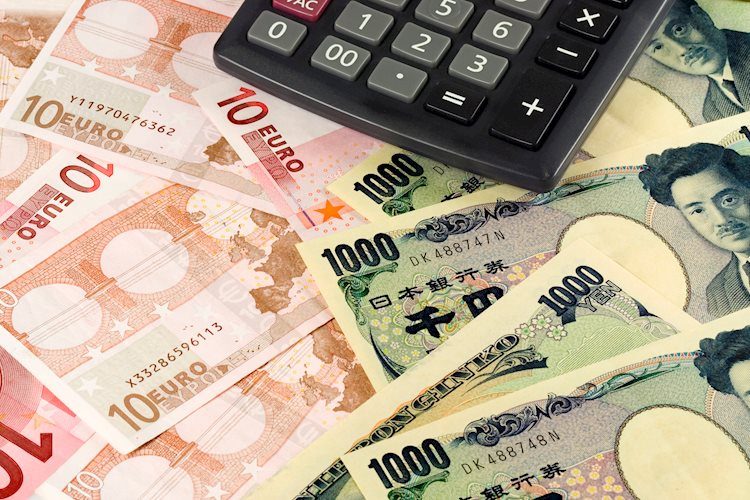The EUR/JPY cross has been edging higher towards the 164.40 level in Thursday’s early European session. There is a possibility of further consolidation as indicated by the neutral RSI indicator. The key resistance level for the pair is situated around the 164.95-165.00 region, while the initial support level can be found at 163.64. The lack of clarity regarding a potential rate hike from the Bank of Japan is weighing on the Japanese Yen against the Euro, creating an opportunity for traders to take advantage of the current market conditions.
The Euro is the official currency of 19 European Union countries within the Eurozone and is the second most heavily traded currency in the world after the US Dollar. It accounts for a significant portion of foreign exchange transactions, with an average daily turnover of over $2.2 trillion. The Euro is also a key player in the forex market, with EUR/USD being the most heavily traded currency pair, followed by EUR/JPY, EUR/GBP, and EUR/AUD. The Eurozone’s reserve bank, the European Central Bank (ECB), is responsible for setting interest rates and managing monetary policy to maintain price stability and stimulate economic growth.
Inflation data, measured by the Harmonized Index of Consumer Prices (HICP), is a crucial economic indicator for the Eurozone. If inflation exceeds the ECB’s 2% target, it may lead to an increase in interest rates to control inflation. High interest rates tend to benefit the Euro, making it more attractive to global investors. Economic indicators such as GDP, Manufacturing and Services PMIs, employment data, and consumer sentiment surveys also impact the direction of the Euro. A strong economy is favorable for the Euro as it attracts foreign investment and may lead to interest rate hikes.
Trade Balance is another essential indicator for the Euro, measuring the difference between exports and imports in a country. A positive net Trade Balance strengthens a currency as it reflects high demand for exports. This demand can increase the value of the currency as foreign buyers seek to purchase goods from that country. Conversely, a negative trade balance can weaken a currency. Economic data from the four largest economies in the Eurozone, namely Germany, France, Italy, and Spain, play a significant role in influencing the Euro’s value as they account for a large portion of the Eurozone’s economy.
Overall, the EUR/JPY cross continues to show strength in early European trading hours, with the potential for further consolidation. Traders are closely monitoring key resistance and support levels as well as economic indicators that could impact the Euro’s performance. The Euro’s position as a major player in the global forex market and the actions taken by the ECB to maintain price stability are important factors influencing the Euro’s value. By staying informed about economic data releases and market trends, traders can make informed decisions when trading the EUR/JPY cross.


























